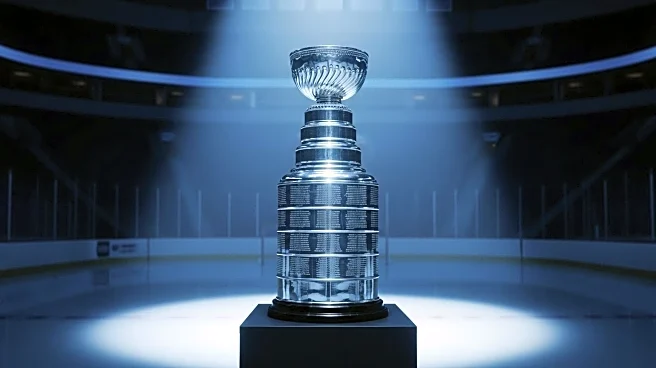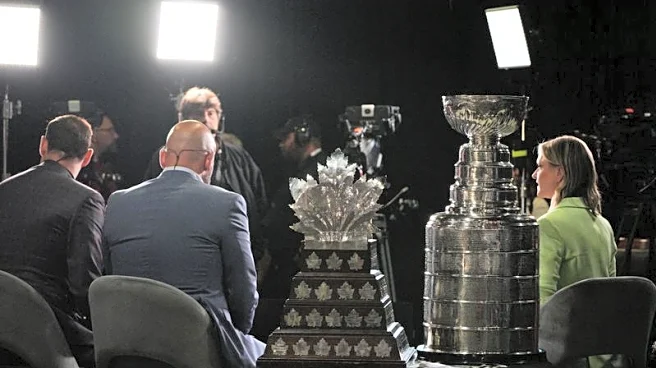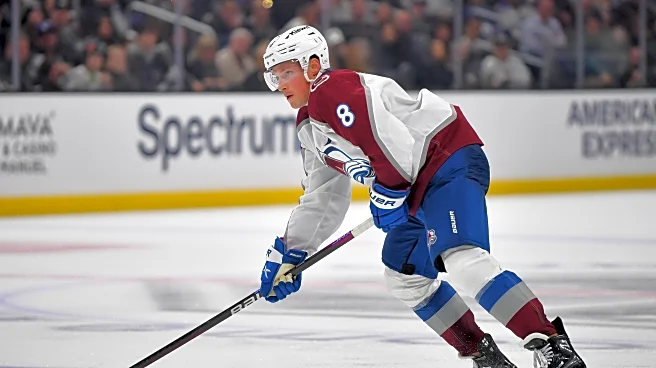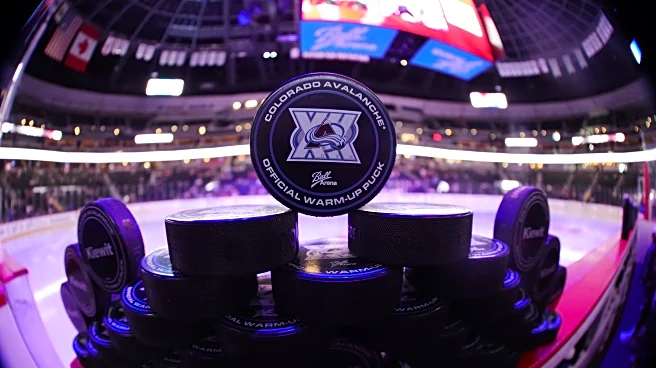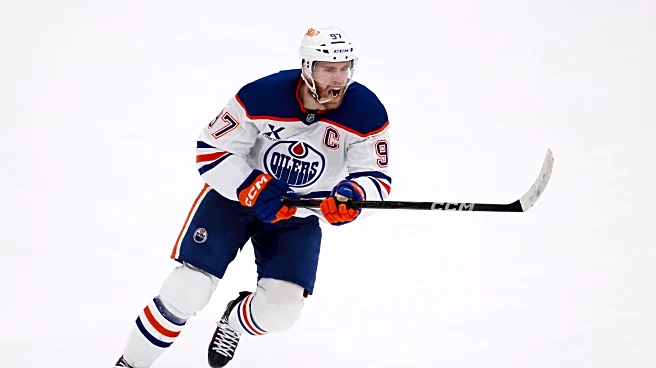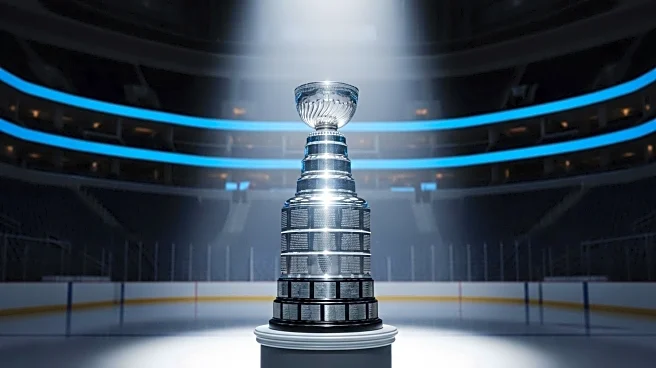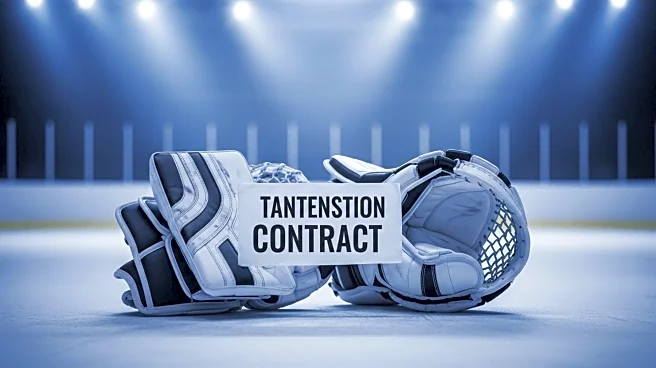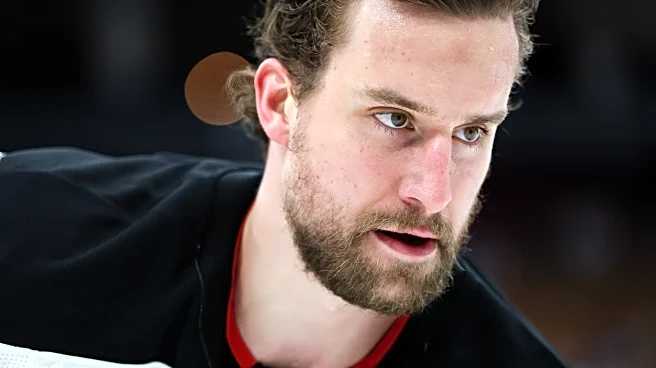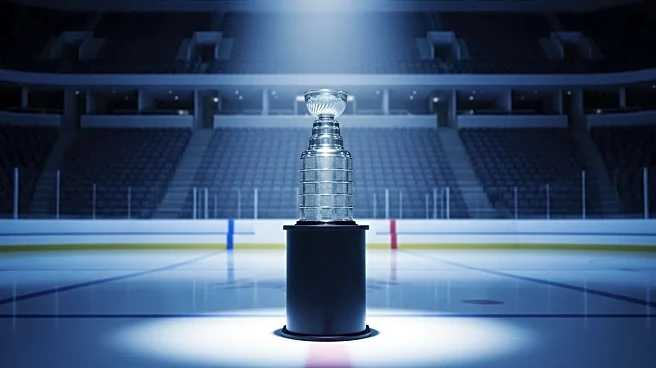What's Happening?
The National Hockey League (NHL) has announced its list of highest-paid players for the 2025-26 season, with Edmonton Oilers center Leon Draisaitl leading the pack. Draisaitl's earnings are set at $14 million annually, following an eight-year, $112 million contract extension signed in 2024. This marks a significant increase from previous seasons, where the title of highest-paid player has shifted frequently. Notably, Minnesota Wild winger Kirill Kaprizov is expected to surpass Draisaitl next season with an eight-year, $136 million extension, setting a new NHL record with a $17 million cap hit. The list also includes other top earners such as Auston Matthews of the Toronto Maple Leafs and Nathan MacKinnon of the Colorado Avalanche, with salaries of $13.25 million and $12.6 million, respectively.
Why It's Important?
The financial dynamics within the NHL are crucial for understanding the league's economic landscape and its impact on team strategies and player negotiations. High salaries reflect the league's revenue growth and the increasing marketability of its star players. For teams, managing salary caps while retaining top talent is a strategic challenge that can influence competitive balance. Players like Draisaitl and Kaprizov not only set benchmarks for individual earnings but also drive up the market value for other players, potentially leading to more lucrative contracts across the league. This trend can affect team compositions, fan engagement, and the overall financial health of the NHL.
What's Next?
As the NHL continues to evolve financially, teams will need to navigate the complexities of salary cap management. The upcoming seasons may see further adjustments to the salary cap, with potential increases based on league revenues. This could provide teams with more flexibility in player acquisitions and contract negotiations. Additionally, the anticipated rise in player salaries may prompt discussions on revenue sharing and financial sustainability within the league. Stakeholders, including team owners, players, and the NHL Players' Association, will likely engage in negotiations to address these financial dynamics.

